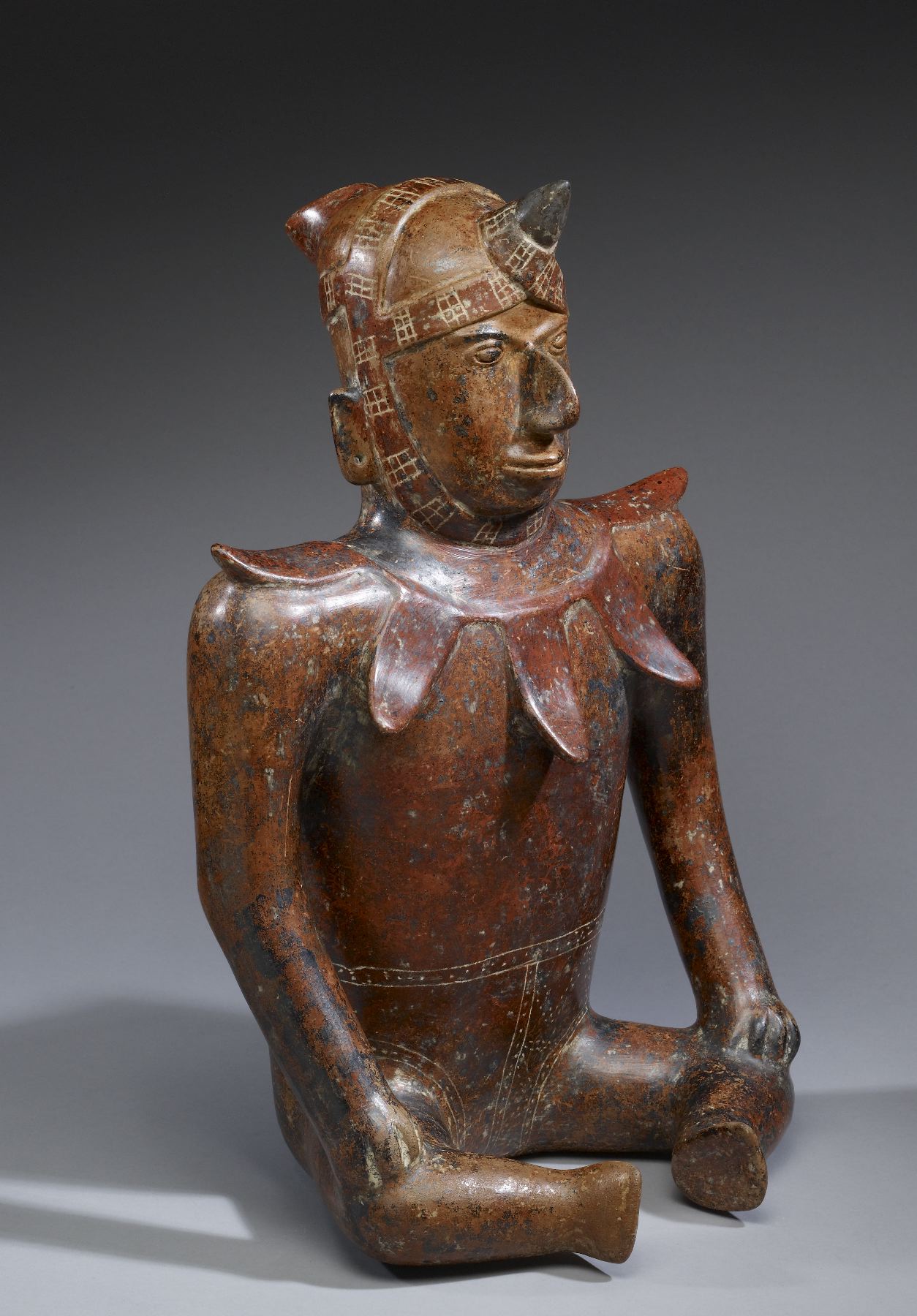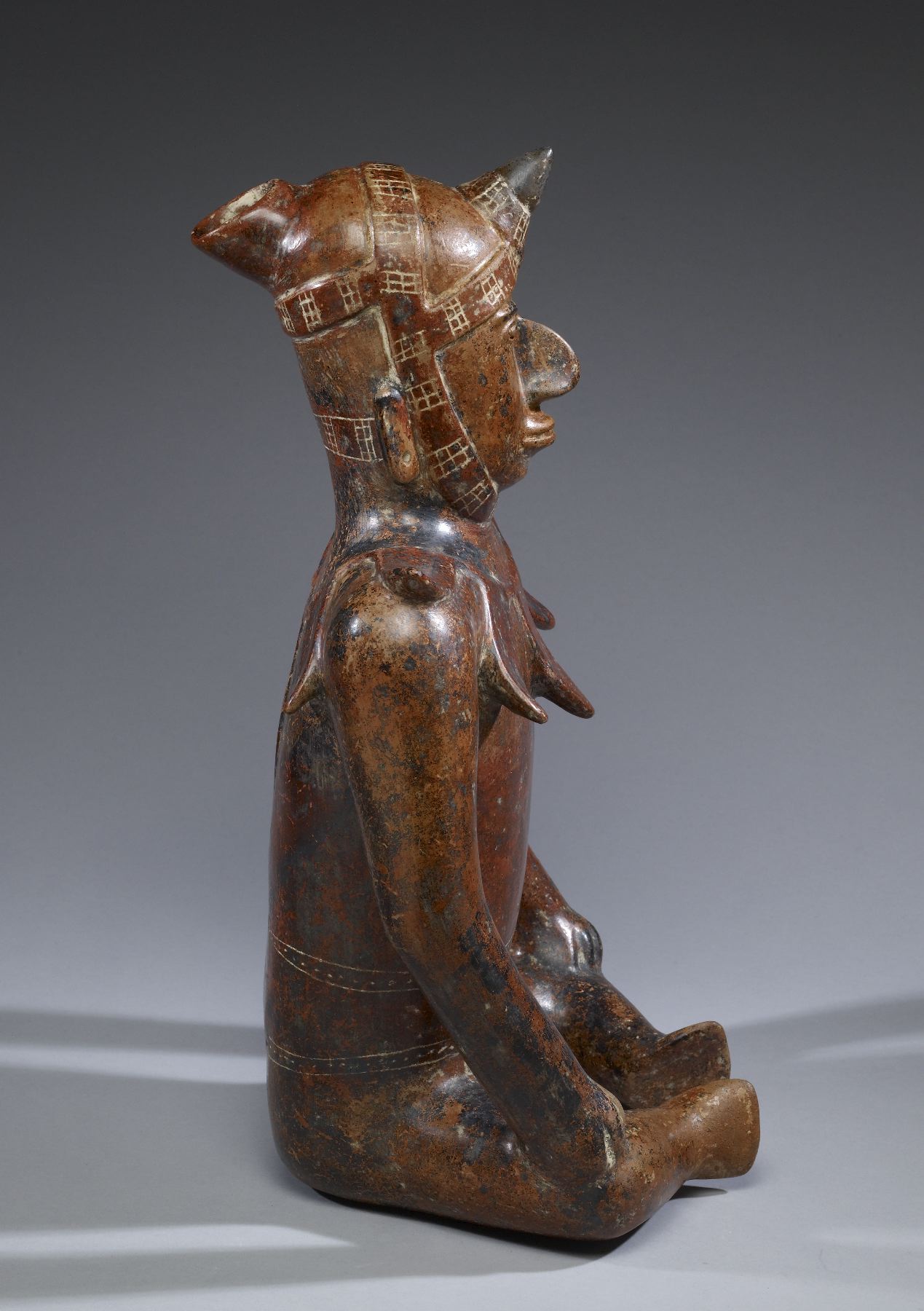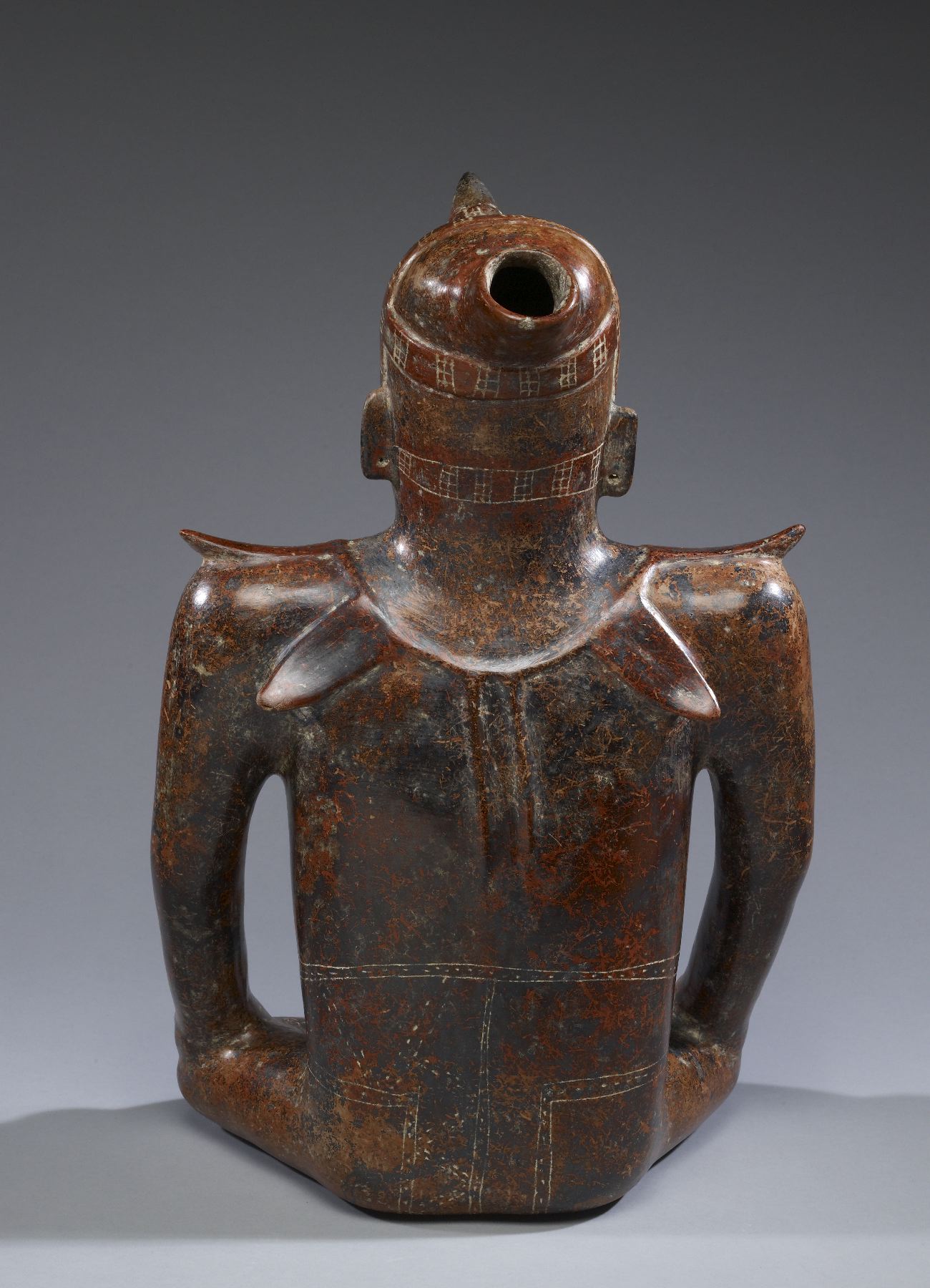Seated Male
(Ancient Americas )
This figure-as-vessel features a seated male of commanding presence. The dark red-slipped figure portrays a man with confident visage in a straightforward, commanding seated position. His hornlike protrusion is tied to his head with embellished (embroidered?) cloth straps, and his hip wrap is equally well decorated. He also sports an elaborate necklace of large shells. The horned element atop the figure's forehead suggests other interpretations, particularly that of a shaman and his supernatural horn. The shaman would use the horn to battle malevolent spiritual forces, the horn also symbolizing his tonally (vital essence and spirit power). An alternative interpretation views the hornlike element as a symbol of social hierarchy and rulership, sacrifice, and cosmic geography and the earth's fertility. It represents a prong cut from a conch shell that throughout Mesoamerica was associated with rituals of sacrifice and warfare, and also expressed political rank. As such, the figure may be understood as portraying a person of social and political authority based on religious ideology.
Provenance
Provenance (from the French provenir, 'to come from/forth') is the chronology of the ownership, custody, or location of a historical object. Learn more about provenance at the Walters.
Stendahl Galleries, Los Angeles [date and mode of acquisition unknown]; John G. Bourne, 1990s, by purchase; Walters Art Museum, 2009, by gift.
Exhibitions
| 1998-2008 | Art of Ancient America, 1500 B.C.-1400 A.D.. Museum of New Mexico, Santa Fe. |
Geographies
Mexico, Colima (Place of Origin)
Measurements
H: 17 1/16 x W: 11 7/16 x D: 9 1/8 in. (43.4 x 29.1 x 23.2 cm)
Credit Line
Gift of John Bourne, 2009
Location in Museum
Not on view
Accession Number
In libraries, galleries, museums, and archives, an accession number is a unique identifier assigned to each object in the collection.
In libraries, galleries, museums, and archives, an accession number is a unique identifier assigned to each object in the collection.
2009.20.13










